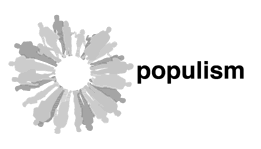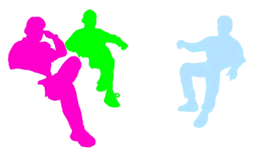Marc Bijl
Marc Bijl marked the one-year anniversary of the terror attack on the World Trade Center in New York with an action at Kunsthalle Fridericianum in Kassel. With black spray-paint, he wrote the word ‘Terror’ graffiti-style, letter by letter on the pillars by the entrance of the building, which at that time housed the Documenta XI exhibition. It took only three hours before the black letters – one on each pillar – were removed. The action was both illegal and provoking. But what does it mean to have written ‘terror’ on the Fridericianum on September 11th 2001?
Perhaps one can say that Documenta is for art what the World Trade Center was for finance – a place where everyone would like to be and a powerful symbol. Bijl’s action can also be compared to terror in as much as it was illegal and was directed at a well-known public building. But it is not terror. And even if his action was apparently simple, the message as such is more ambiguous. It is neither clearly for nor against terror. And herein lies the provocation – a bit like the punk movement, which adorned itself with swastikas and crucifixes in an attempt to level the symbols’ ingrained values and associations.
Bijl’s interventions in public space are not only about ‘reclaiming the street’ – in an old school Street Art manner. They are also about disturbing, puncturing and shifting the myths and loaded expressions that surround us every day. It is characteristic for Bijl that the result is often a rather ambiguous message, which does not straightforwardly lend itself to decoding. Rather than agitating for a certain cause, Bijl’s actions are about investigating social and political authority – and also commercial authority, as in the work Symbolic from 2002, where Bijl placed concrete casts of the Nike logo in different places in Berlin. Here Nike’s logo almost looked like a monument in ruins – an archaic cultural-historical fragment. And considering the iconic status of the brand, it is not completely unlikely that this is how the well-known logo will once be seen. But in the current context Bijl causes confusion by wrapping the commercial symbol in an anachronistic rhetoric. Bijl’s actions do not change the fundamental structure of things, but reconsider myths and superficial images – of terrorism, the art world, nations or corporations. By exaggerating a certain form of expression or using the ‘wrong’ rhetoric, Bijl delivers new myths to the public space.
By Pernille Albrethsen, translated by Eva May
'The party is over' (2003) (Inflatable letters and serpentine)
Private collection Amsterdam. Courtesy Upstream Gallery Amsterdam
|









